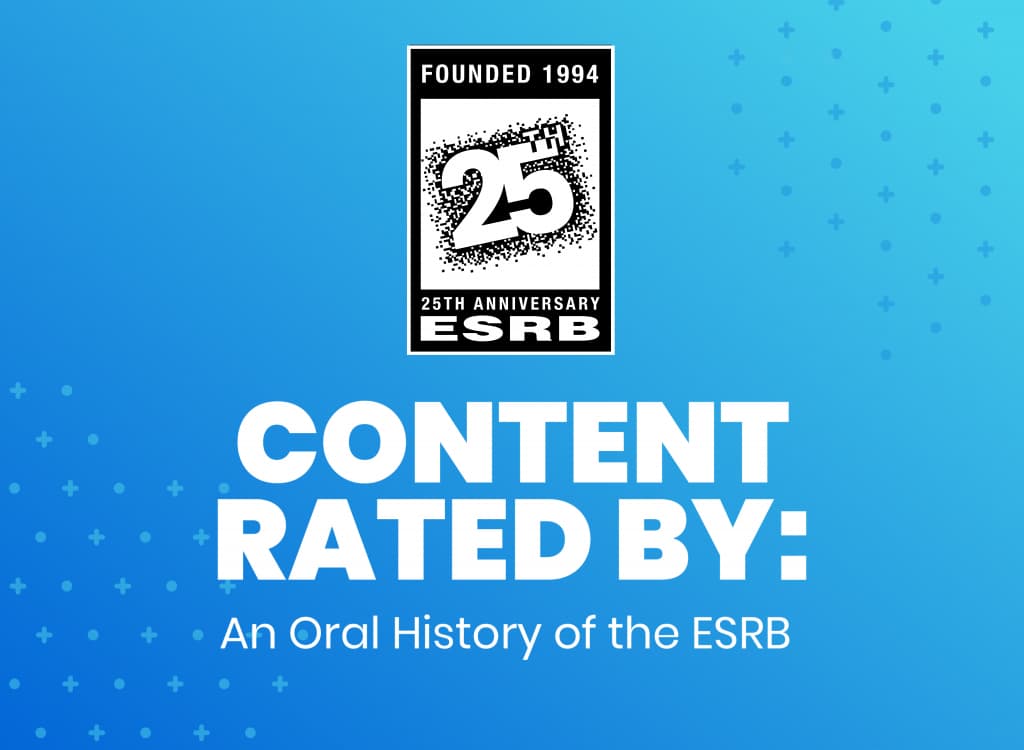About ESRB
We are the non-profit, self-regulatory body for the video game industry. Established in 1994, our primary responsibility is to help consumers – especially parents – make informed choices about the games their families play.
What We Do and Why
Our rating system was established with the help of child development and academic experts, based on an analysis of other rating systems and what kind of information is valuable to parents. We found that consumers respond best to an age-based rating system that includes information about the content of a game. As games evolved, we found that parents place equal importance on understanding the ways in which some games are played, such as interacting with others online and spending money on in-game items.
Our three-part rating system includes Rating Categories to suggest age-appropriateness, Content Descriptors to indicate what type of content may have triggered the rating, and Interactive Elements, to advise about sharing the user’s location with other users, in-game purchases, user interactions, and unrestricted internet access. The result is a rating system that is widely adopted by game publishers, supported by retailers, regularly used by parents, and consistently described by regulators and opinion leaders as the most effective entertainment rating system in the U.S., if not the world.
We are also responsible for enforcing industry-adopted advertising guidelines, and helping to ensure responsible web and mobile privacy practices under the ESRB Privacy Certified Program.
Content Rated By:
An Oral History of the ESRB
To help commemorate its 25th anniversary, ESRB reached out to Blake J. Harris, the bestselling author of “Console Wars: Sega, Nintendo, and the Battle That Defined a Generation” and “The History of the Future: Oculus, Facebook and the Revolution That Swept Virtual Reality” to document the behind-the-scenes origins of the rating system for video games and how it has evolved over the past quarter century.
“CONTENT RATED BY: An Oral History of the ESRB,” provides eye-witness accounts from the key people involved in the ESRB’s creation and its development into one of the country’s finest examples of industry self-regulation.
Inside the ESRB
In 2019, we allowed a camera crew into our office for the first time in our 25-year history to film a documentary about what we do. Produced, edited, and distributed by the creative team at Noclip, the documentary explores how we assign ratings to video games and apps, how we help ensure that video games are responsibly marketed, the future of industry self-regulation, and more.
Watch “How Does the ESRB Rate Video Games?” on Noclip’s YouTube channel for the whole story.

Meet Our Executive Team
Patricia E. Vance is the president of the Entertainment Software Rating Board (ESRB). In her position, she leads the teams responsible for assigning age and content ratings to video games and apps, enforcing marketing guidelines adopted by the video game industry, and operating ESRB Privacy Certified, an FTC-approved COPPA Safe Harbor Privacy seal certification program.


